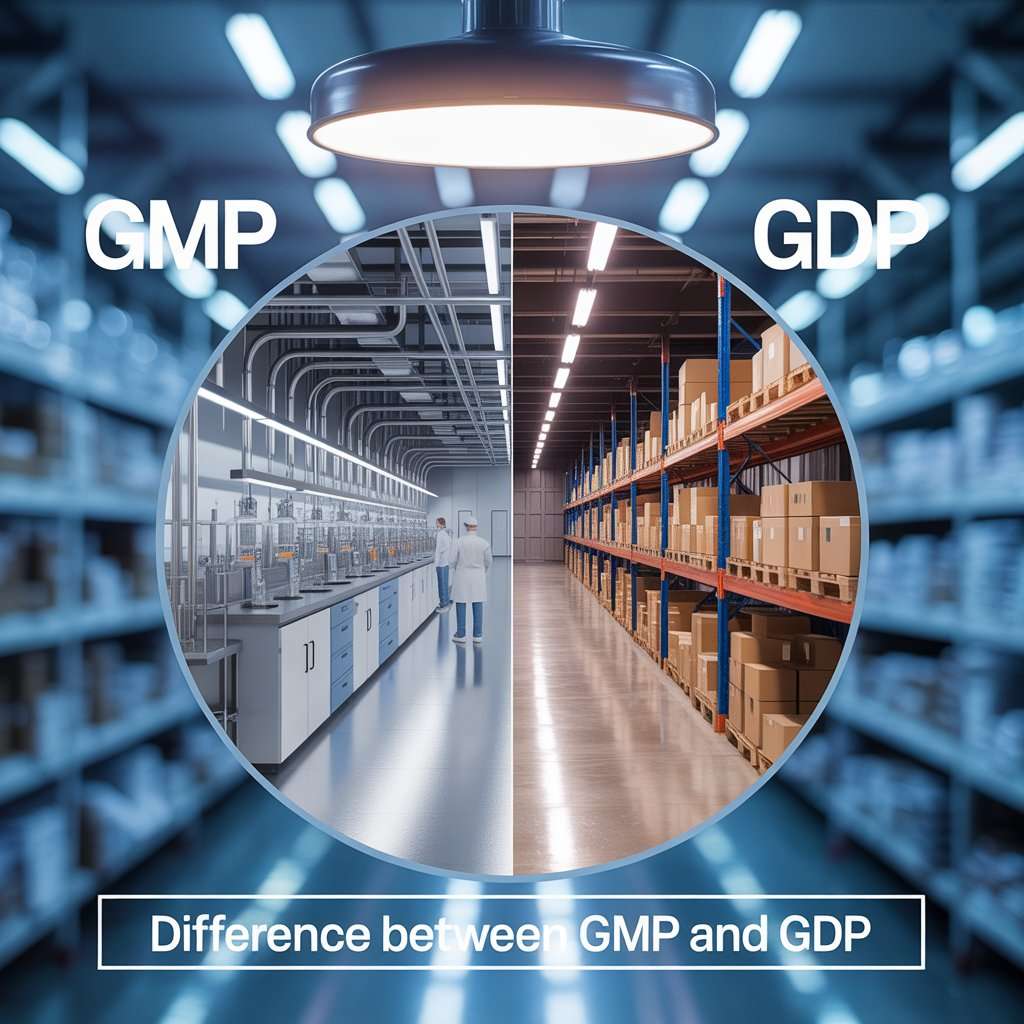If you’re involved in the pharmaceutical industry, you’ve likely heard of GMP (Good Manufacturing Practices) and GDP (Good Distribution Practices). These two concepts are crucial when designing or upgrading a pharmaceutical facility — but they serve different purposes.
In this post, we’ll break down the difference between GMP and GDP in a way that’s easy to understand. Whether you’re a facility manager, operations head, or working with a pharma consultancy, knowing how these guidelines apply to your building can help you stay compliant and avoid costly mistakes.
Why Should You Care About GMP and GDP?
Designing a pharmaceutical facility isn’t just about walls and equipment. It’s about creating a space that protects product quality and patient safety. GMP and GDP are two sets of guidelines that help companies do exactly that.
- GMP ensures that medicines are made in clean, controlled environments.
- GDP ensures that those medicines are stored and delivered safely after production.
Both are essential if you want to stay compliant with regulatory bodies like the FDA, WHO, and EMA.
What is GMP in Facility Design?
GMP (Good Manufacturing Practices) focuses on how medicines are produced. It sets the rules for cleanliness, safety, and consistency during manufacturing.
Key Features of a GMP Facility:
- Cleanrooms: Special rooms with filtered air to reduce contamination.
- Material Flow: Raw materials and finished products must move in separate paths to avoid mix-ups.
- Trained Staff: Personnel must follow strict hygiene and operational procedures.
- Validated Equipment: Machines must be tested and maintained regularly.
Example:
If you’re producing sterile injections, your facility must include controlled environments, clean air systems, and strict procedures to avoid any contamination.
Tip: Consult with GMP compliance consulting experts early in the design phase to avoid rework and regulatory issues later on.
What is GDP in Facility Design?
GDP (Good Distribution Practices) focuses on what happens after manufacturing — when the product is stored, handled, and transported.
Key Features of a GDP-Compliant Facility:
- Temperature-Controlled Storage: Many drugs need cold storage or climate-controlled conditions.
- Secure Access: Only authorized personnel should handle products to prevent theft or tampering.
- Monitoring Systems: Continuous temperature and humidity tracking.
- Efficient Layout: Warehousing areas must be organized to prevent product damage or delays.
GMP vs GDP: What’s the Difference?
| Feature | GMP (Manufacturing) | GDP (Distribution) |
| Focus | How medicines are made | How medicines are stored/moved |
| Facility Design Focus | Cleanrooms, contamination control | Temperature zones, logistics |
| People Involved | Production and quality staff | Warehouse and logistics staff |
| Compliance Goal | Ensure quality during production | Maintain quality after production |
Common Mistakes to Avoid
- Designing only for GMP, ignoring GDP — especially for in-house warehousing.
- Overlooking GMP layout flows — like separating people and material movement.
- Skipping expert advice — leading to expensive redesigns later.
That’s why many companies work with a pharma consultancy to get it right from the beginning.
How a Pharma Consultancy Can Help
Experienced pharmaceutical consultants offer:
- ✔ Site evaluations for GMP and GDP readiness
- ✔ Facility layout planning that meets global standards
- ✔ Help with inspections and documentation
- ✔ Advice on equipment and validation
They act as your compliance partner, saving you time and resources.
FAQs
Q: Can one facility follow both GMP and GDP?
A: Yes, many pharmaceutical plants include both manufacturing and storage. A good design will meet both requirements.
Q: Who checks for GMP and GDP compliance?
A: Regulatory bodies like the FDA, EMA, and WHO conduct audits and inspections.
Q: Do all pharma products require temperature control?
A: Not all, but many do — especially vaccines, biologics, and some antibiotics.
Final Thoughts
GMP and GDP may sound technical, but at their core, they’re about protecting patients. By designing facilities that follow both, pharmaceutical companies can produce safe medicines and ensure they stay safe all the way to the patient.
Need help getting started? At JD Pharma, we specialize in GMP compliance consulting and facility design. As one of the top pharmaceutical consultants, our team helps you meet global standards while improving efficiency.
Get in touch today to talk about your facility goals and how we can help you build smarter and safer.

